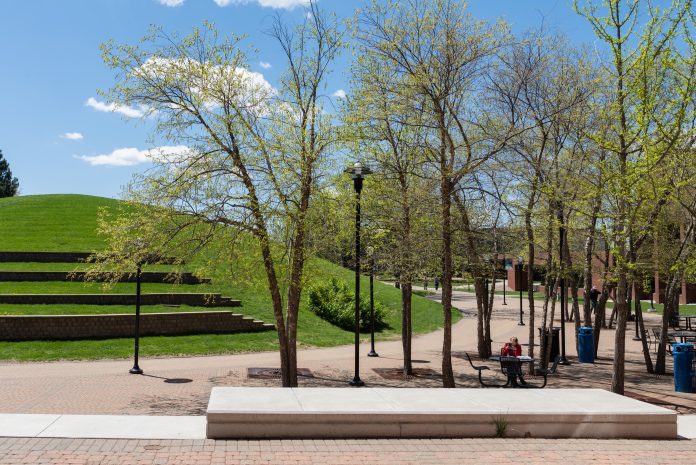Avery Gott
Staff Reporter
In December 2018, the Board of Trustees decided to increase tuition by $1 per credit hour. Seven months earlier, however, the board voted to decrease the tax rate for property owners, referred to as a mill levy. Meanwhile, the state’s role in funding the college largely stayed under the radar.
This shifting burden from property owners to students made headlines in the Kansas City metro area. Many were concerned the tuition increase, said to be preemptive to soften the blow of later increases, would cause hardship for students.
“One perspective will be, well, you know, the property owners are paying a disproportionate share,” Joe Sopcich, president at the college, said. “Others believe the students have their own challenges and the property owners can certainly handle it.”
In 2010, property taxes accounted for 58 percent of the school’s income. This year, they account for 65 percent according to the annual 2018-2019 budget compiled by the Financial Department on campus. According to Sopcich, that increase reflects a shifting mentality in society.
“There was a shift from the society bearing the cost, to the individual needs to carry more of that cost,” Sopcich said. “You’ve seen a decline in state funding, and that falls on the backs of the students. Our first focus is always the students, but it’s also the community that supports us to the degree that it does.”
Property tax revenue continues to increase alongside tuition despite the mill levy decrease. Next year, property taxes will increase to account for 66 percent of the college’s revenue, Rachel Lierz, Chief Financial Officer, said in an April 18 presentation to the board.
“We made an adjustment in assessed valuation to 5.75 percent and the mill levy recommendation remains flat after a quarter mill reduction,” Lierz said. “The recommendation for next year is currently to leave that in place. We don’t expect for property values to continue to go up by 5 or 6 or 7 percent as they have in recent years.”
Despite the mill levy reduction, the school will be taking in $106 million in property taxes next year, up from $99 million this school year.
Trustee Angeliina Lawson is among those concerned about what she calls “the social contract” communities have to support students at the college. She voted for the small mill levy decrease to relieve property owners and against a tuition increase for students. Lawson said community members felt the rise in taxes created a burden, particularly on low income families.
“They felt that when we [the college] got the increase in appraisals, that it was a real hardship to the community, it was something that they hadn’t seen in a while,” Lawson said. “I’m concerned about the equitable factor in this. If you are rolling back to one group, a class of people, why not the other class of people?”
The college has three main funding sources: property taxes, tuition and state funding. Kansas granted about $20 million to the college this school year. That might sound like a lot, but students contribute 150 percent more than the state. Property owners, however, pay nearly five times what the state is putting in.
This year, state funding made up just 13 percent of the total revenue of the college, the least of the three categories. State funding has decreased a total of 10 percent since 2015 while tuition and property taxes have increased.
Schools state-wide are unconstitutionally underfunded as a result of the Brownback Experiment, a failed plan instituted by former Governor Sam Brownback to reduce taxes by drastically cutting the budget. The new Governor, Laura Kelly, who has now been in office just over 100 days, campaigned on funding education but has not yet executed a plan for doing so.
“I feel like over time the states have gotten out of the business of funding higher ed and even K-12 public education,” Lawson said. “We have a new governor now, Laura Kelly, who sees things differently and is working very hard with the Statehouse and the Senate to be able to really look at the damage that has been done since the Brownback Experiment taxation that really blew a hole in our budget.”
Next year, revenue from the state will continue to lag behind tuition and property taxes. According to Sopcich, in the past, the burden of funding education wasn’t left up to individuals.
Sopcich said, “Historically, there was a time when it was society’s role to carry those costs. People always talk about, ‘oh I paid my way through school,’ back in the 60s. I think it’s important to note that back then, for example, the state picked up a significant share of those costs.”






















